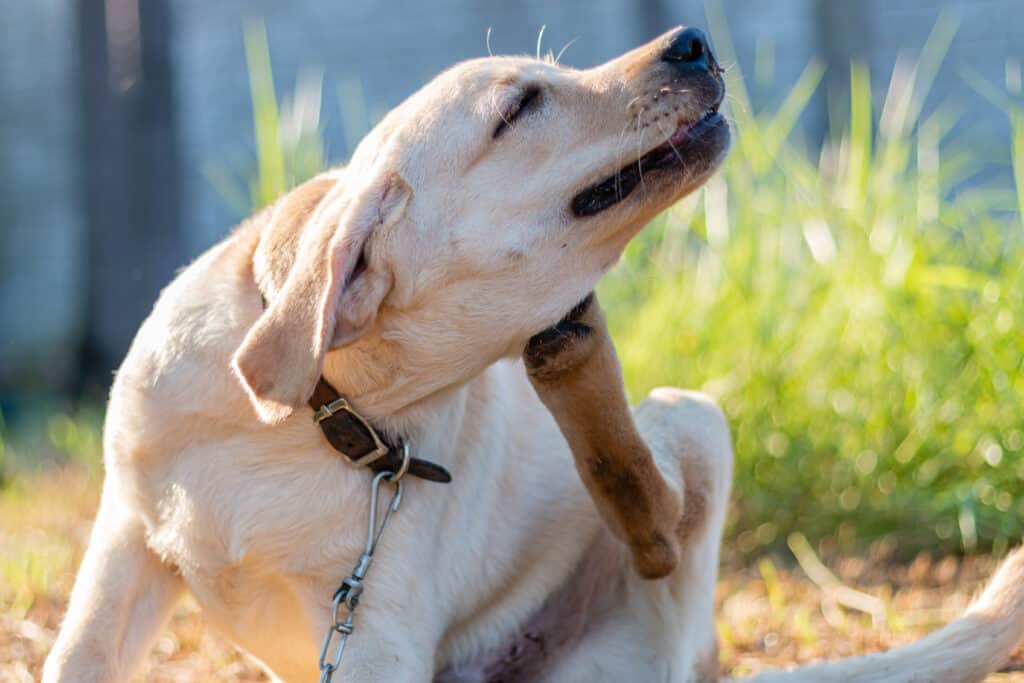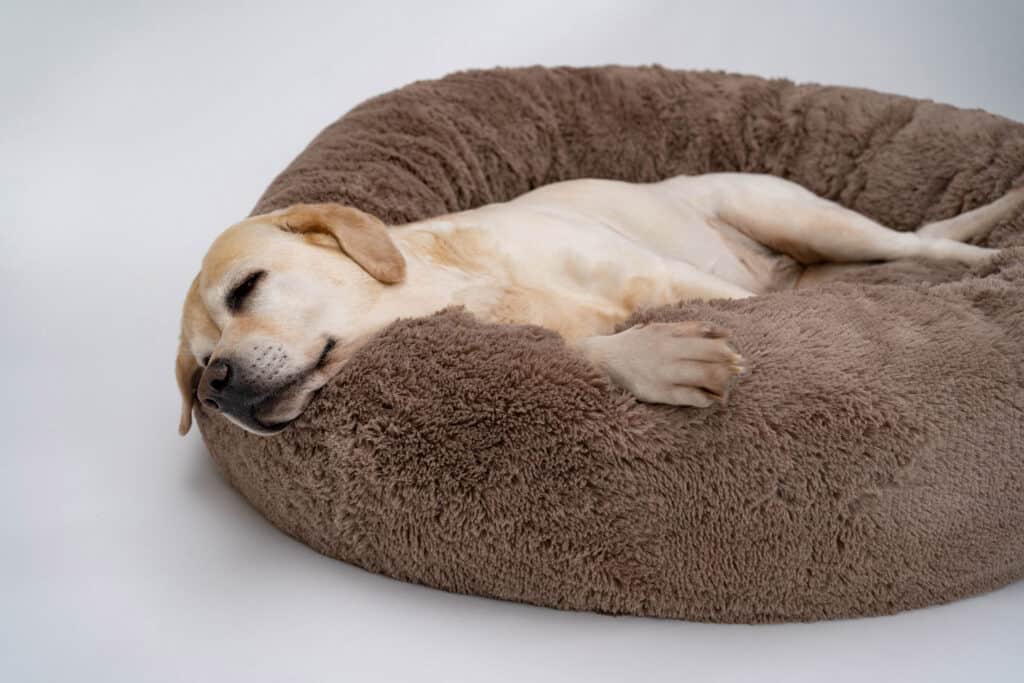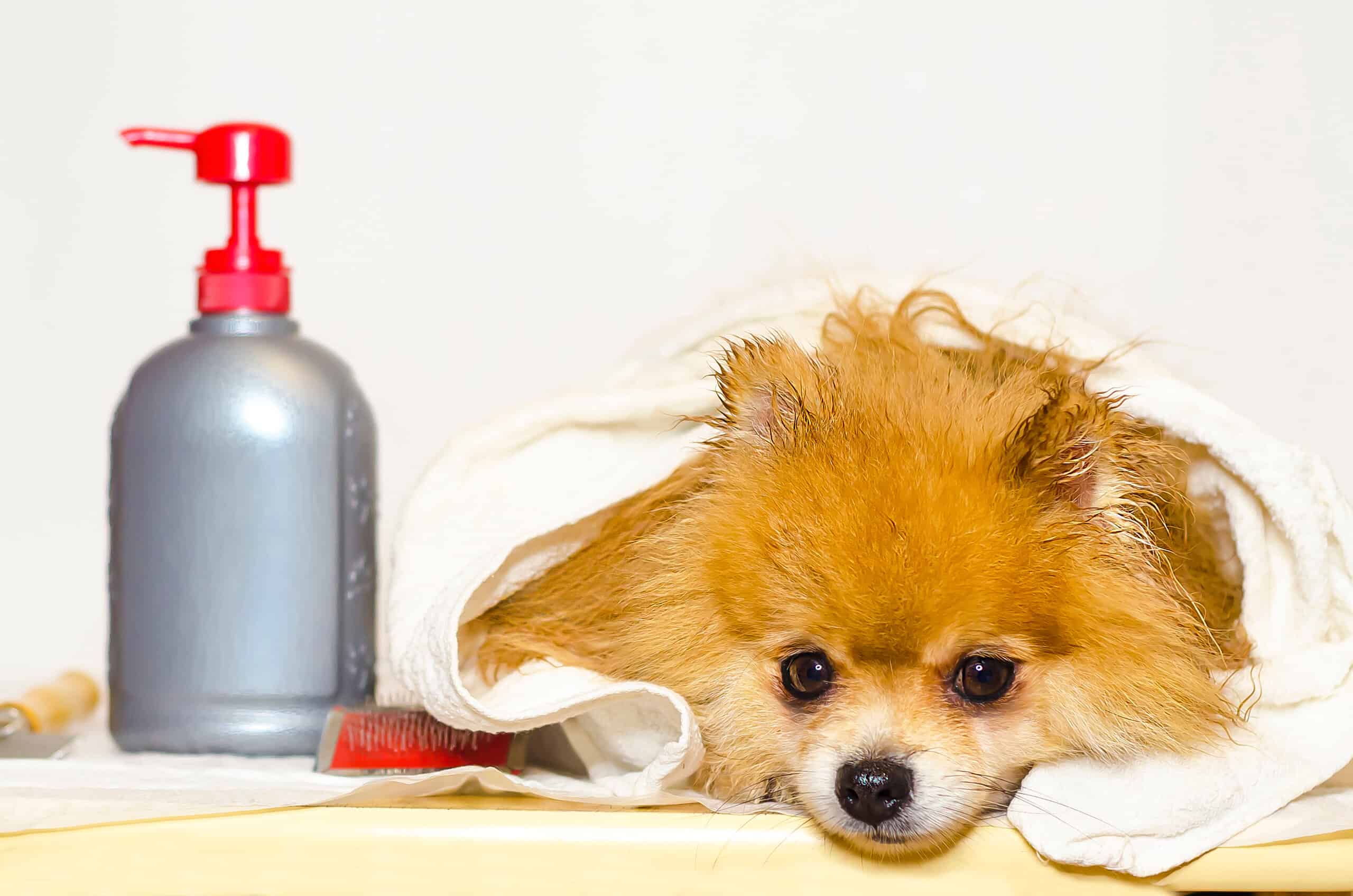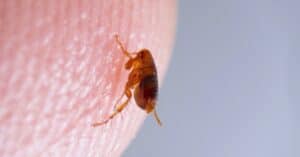Fleas are some of the most persistent and unwelcome of all the pests. They can cause distress for both pets and humans. Not only are their bites incredibly annoying, but they can also pose a significant health risk. Plus, they’re notorious for their ability to reproduce rapidly.
If you have fleas in your home, you must deal with them quickly and efficiently. They can carry various diseases and parasites, transmitting them to humans and animals. Their bites can also cause skin irritation, allergies, and even anemia in severe cases – in both humans and pets.
(In fact, it’s thought that infected fleas transmitted the bubonic plague.)
While you can purchase commercial products to control fleas, there are also homemade options. In this article, we’ll explore the best natural flea spray to keep in your home.
The Benefits of Homemade Flea Spray

Fleas are some of the most irritating household pests, but you can keep them at bay with a homemade spray.
©Sommai Iam/Shutterstock.com
Over commercial sprays, homemade flea spray has several advantages. First, they tend to be a bit safer, as they often use natural products. Of course, natural doesn’t always mean 100% safe, as many natural ingredients can also be irritants. However, they tend to be safer than chemical-based products.
Homemade sprays can also be more budget-friendly. Many commercial products are expensive, while effective homemade sprays often include common household items only.
When making your own flea spray, you have control over the ingredients. You can tailor the spray to your specific needs, considering the sensitivities and preferences of your pets and family members.
Some homemade sprays may also have a smaller environmental footprint. In most cases, they use fewer chemicals, reducing the risk of contaminating water sources or harming wildlife.
Plus, you can prioritize safety when making your own spray. You can select the best ingredients for your pets, family members, and the environment. If you have children with sensitivities in your home, then being able to prioritize safety may be the only reason you need to switch to a natural option.
Commercial products often contain a mix of chemicals, some of which may be unnecessary for your specific situation. With a homemade flea spray, you can choose ingredients that are gentle yet effective, ensuring the well-being of everyone in your home.
Ingredients for Homemade Flea Spray

Apple cider vinegar is one of the primary ingredients in this natural flea spray.
©iStock.com/alicjane
You can choose from several ingredients when making a homemade flea spray. In many cases, these are most effective when you use a few different ingredients, but which ingredients are entirely up to you.
Here are some of our suggestions:
- Apple Cider Vinegar: Apple cider vinegar is a popular ingredient in homemade flea sprays due to its acidity, which can help repel fleas. It’s safe for most pets and has additional benefits, such as promoting healthy skin and coat. The acidity disrupts the pH balance for fleas, which makes the environment inhospitable.
- Water: Water is used as a base for your flea spray. It dilutes the other ingredients and makes the spray safe for application on pets and around your home. You’ll need to dilute the mixture enough to avoid skin irritation.
- Essential Oils: Essential oils are potent natural flea repellents. Some commonly used essential oils for flea control include lavender, cedarwood, eucalyptus, and citronella. These oils have strong scents that deter fleas and can also soothe irritated skin.
- Lemon Juice: Lemon juice contains natural compounds that fleas dislike. Its citrusy scent can act as a deterrent and help keep fleas away.
- Aloe Vera (Optional): Aloe vera gel can be added to the spray to soothe your pet’s skin, especially if they’ve been scratching due to flea bites. It has moisturizing and anti-inflammatory properties.
Preferably, you should use all of these ingredients. However, this isn’t absolutely necessary. If you don’t have any lemon juice lying around, you can skip it. You should have most of these ingredients lying around your home, but you can purchase anything you need, of course.
How to Make Homemade Flea Spray
To create a homemade flea spray, you just have to follow a few steps. Here’s what we recommend:
Step 1: Gather Your Ingredients
First, gather the ingredients we explained above:
- Apple cider vinegar
- Water
- Essential oils (e.g., lavender, cedarwood, eucalyptus, citronella)
- Lemon juice
- Optional: Aloe vera gel
Step 2: Determine the Ratio
Now, you need to determine the amount of each ingredient, which can vary a bit. We recommend starting with this formula. However, you may need to dilute it more or less depending on your situation:
- 1 cup of water
- 1 cup of apple cider vinegar
- 10-15 drops of essential oil (use one or a combination)
- 2-3 tablespoons of lemon juice
- Optional: 1-2 tablespoons of aloe vera gel
Step 3: Mix the Ingredients
Combine everything together, preferably in a spray bottle. Make sure the lid is secure, and give it a good shake.
Step 4: Test
Before you spray your pet down, perform a test on a small part of your dog’s body. Let it sit for about 24 hours, and then look at it to determine if there was any adverse reaction. If not, you can treat your whole pet with it. If there was, consider diluting the mixture more.
Step 5: Apply the Flea Spray
Once you’ve confirmed that the spray is safe for your pet, it’s time to apply it. Hold the spray bottle about 6-8 inches away from your pet and lightly mist their fur. Be careful not to spray it directly into their eyes, ears, or nose.
Step 7: Comb Through Their Fur
Next, use a flea comb to work it through your pet’s fur. This helps distribute the solution and ensure it reaches the skin, thoroughly coating your pet.
Step 8: Repeat
You’ll probably need to apply the spray a few times. You can also use it on carpets, dog bedding, and furniture. Just test it on a small area to ensure it doesn’t harm the fabric.
Step 9: Monitor for Improvement
Keep an eye on your pet and home for signs of improvement. This spray likely won’t destroy eggs, so you’ll need to retreat regularly until the infestation is under control.
Extra Tips
Start with a lower concentration of essential oils and slowly increase it as necessary. Some pets are more sensitive to essential oils than others. Plus, some essential oils are toxic to pets. Always make sure you double-check that the oil you’re using is safe before adding it.
Cats are extra sensitive to essential oils. You may want to leave them out completely if you have felines in your home.
Don’t spray your pet in the face, as this spray can irritate their eyes and ears. If you want to apply it to their face, spray it on a cloth and then rub their face, avoiding their eyes, ears, and nose.
Use a flea comb to remove dead fleas after treatment. When fleas die, they will move to the top section of the fur. Therefore, if the spray is working, you may actually notice more fleas for a little bit.
Be sure to apply the spray to your pet’s bedding, the carpet, and the furniture. These areas harbor fleas and can lead to repeated infestations.
Applying the Spray Effectively

Be sure to spray your pet’s bedding well, and let the natural flea spray sit for a day or two.
©Lily Chernysheva/Shutterstock.com
You need to apply the spray effectively to control fleas. Hold the spray bottle about 6-8 inches away and give your pet an even mist. Ensure you cover their whole body, except for their face. Then, comb their fur thoroughly to work the mixture down to their skin. If it just sits on the top, it won’t actually do much.
Spray their bedding well. Let it sit for 24 to 48 hours, and then vacuum it. The vacuum will remove dead fleas, larvae, and eggs. You’ll want to do this with any surface your dog lays on regularly. If your pet lays on the couch more than their bed, make sure to treat it, too.
You’ll need to repeat the spray every few days for best results. Frequent application helps ensure that all fleas come into contact with the spray. For mild infestations, every 2-3 days may be enough. Continue the regimen for about two weeks after you last notice fleas in your home.
For more severe cases, you may need to apply the spray daily for the first few days. Then, you can decrease to every 2-3 days after you’ve noticed the problem subsiding.
Even after the infestation is under control, it’s a good practice to use the flea spray as a preventive measure. Apply it weekly or as needed to deter fleas from returning.
Thank you for reading! Have some feedback for us? Contact the AZ Animals editorial team.








